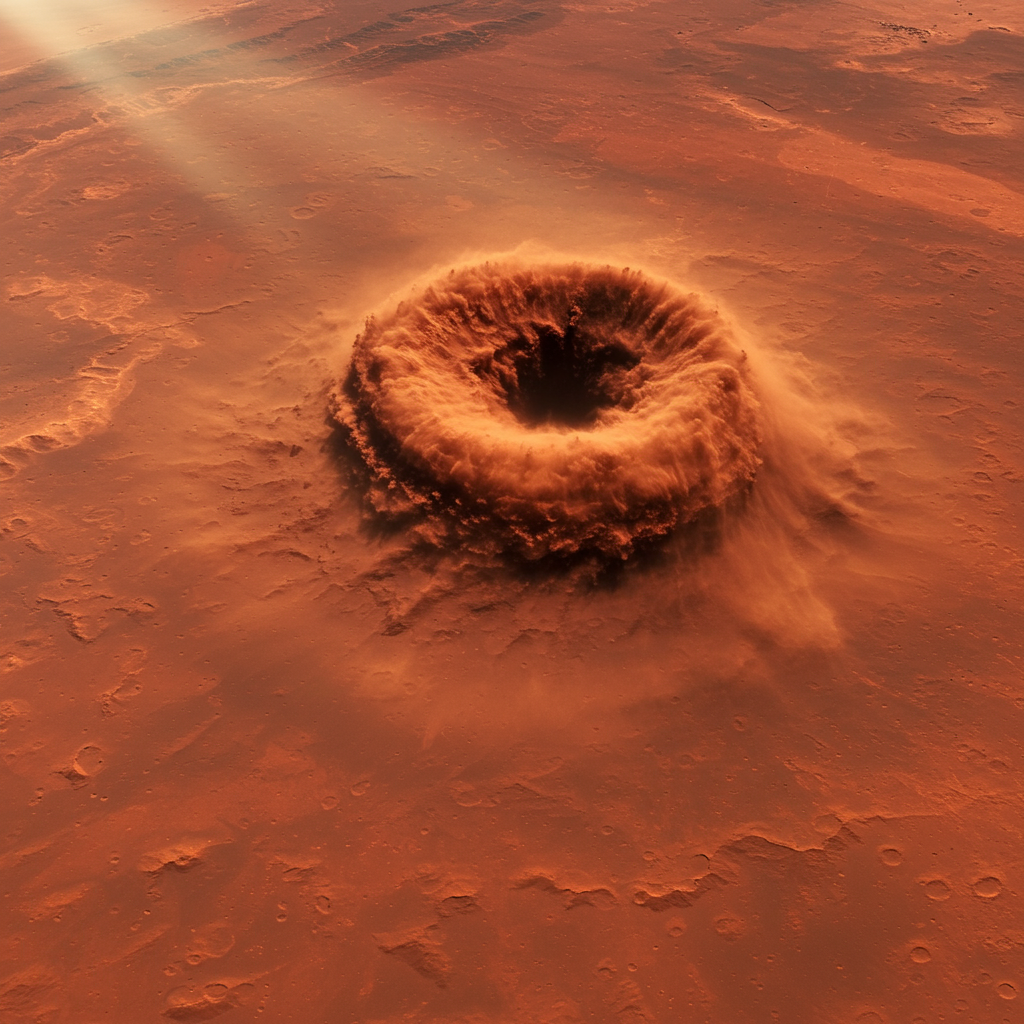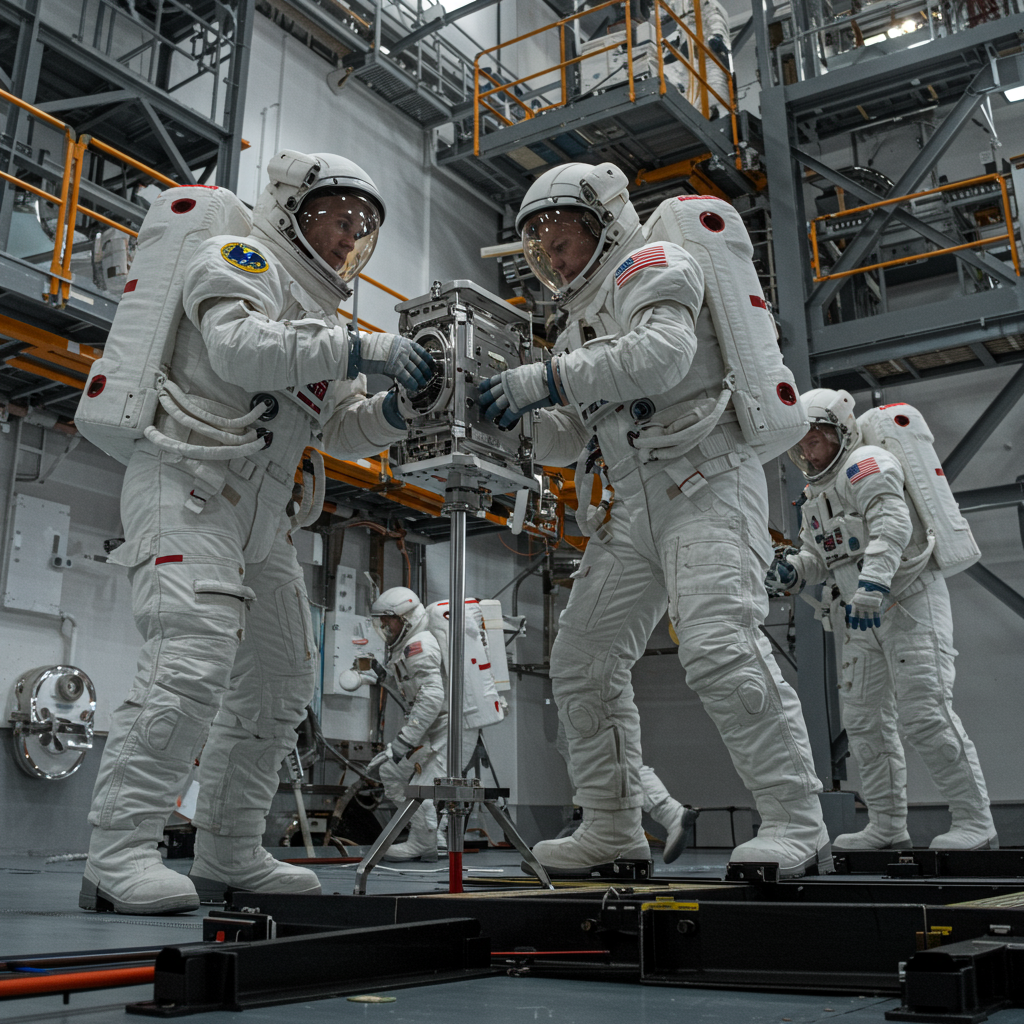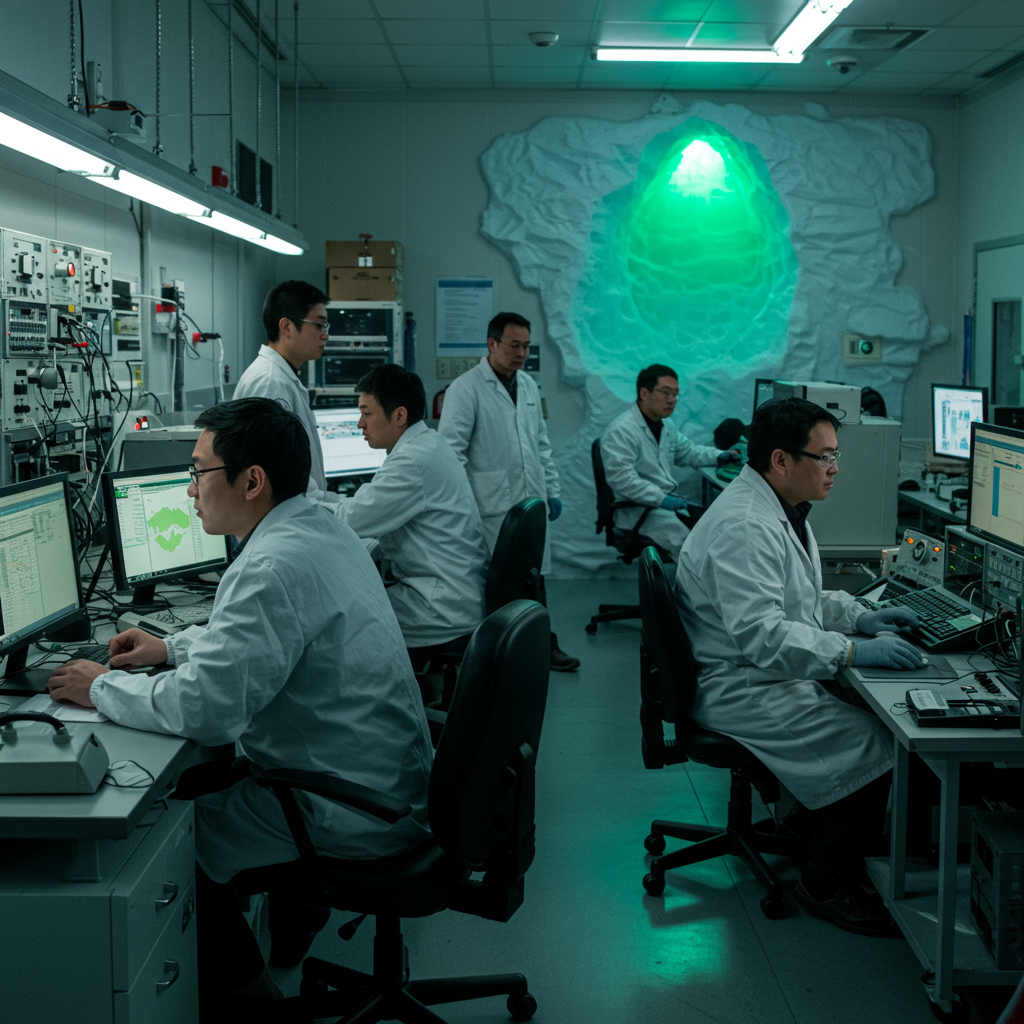Mars, the enigmatic Red Planet, continues to unveil its powerful natural phenomena, challenging our long-held assumptions. Recent groundbreaking research, analyzing two decades of orbital imagery, has revealed that Martian dust devils—those iconic, swirling columns of red dust—harbor surprisingly furious winds. These “mini-tornadoes” not only move much faster than previously imagined but also play a far more significant role in shaping the Martian landscape and atmosphere, fundamentally altering our understanding of the planet’s dynamic climate and impacting the future of space exploration.
Unveiling Mars’ Hidden Tempests: A Breakthrough Study
For years, scientists have observed Martian dust devils dancing across the planet’s surface. However, a comprehensive new study, published in Science Advances and led by Dr. Valentin Bickel of the University of Bern, Switzerland, has exposed their true ferocity. This extensive research leveraged images from two European Space Agency (ESA) orbiters: Mars Express (since 2004) and ExoMars Trace Gas Orbiter (since 2016).
The team developed an innovative approach, training a neural network (a type of machine learning inspired by the human brain) to automatically identify these distinctive vortex structures within the vast orbital data. After rigorous manual verification, researchers compiled an unprecedented, publicly available catalog featuring 1,039 Mars dust devils scattered across diverse Martian terrains. This included observations atop ancient volcanoes and sprawling open plains. For 373 of these rotating dust columns, scientists were even able to pinpoint their precise direction of motion.
The Astonishing Speed of Martian Winds
A key finding from this meticulous cataloging is the astonishing speed of these Martian dust devils and their accompanying winds. The study determined they can move at velocities as high as 160 kilometers per hour (approximately 99 miles per hour). This speed drastically surpasses any previous measurements recorded by rovers exploring the Red Planet’s surface, which typically clocked sustained speeds below 50 km/h (31 mph), with a rare maximum of 100 km/h (62 mph).
Dr. Bickel emphasized the profound implications of this discovery. “This observation implies that those winds are likely able to lift a substantial amount of dust from the surface into the atmosphere,” he noted. This suggests that these powerful whirlwinds are far more effective at lofting dust than previously believed, providing a crucial “new puzzle piece” in understanding the intricate Martian dust cycle: precisely “where, when and how much dust is lifted off the surface and is injected into the atmosphere.”
The Critical Role of Dust in Mars’ Climate
Understanding the Martian dust cycle is paramount for comprehending the planet’s climate and for planning successful future missions. Unlike Earth, where rain helps cleanse the atmosphere, dust on Mars, once airborne, can linger for extended periods, traveling globally. This suspended dust significantly influences Mars’ climate and weather patterns.
Dust acts as a solar shield during the day, preventing sunlight from reaching the surface and causing temperatures to dip. Conversely, at night, this atmospheric dust insulates the planet, trapping heat and keeping temperatures warmer. Previously, the overall contribution of dust devils to this global dust load was likely underestimated. The new research now strongly indicates they play a much larger role in injecting dust into the Martian atmosphere.
Formation and Seasonal Patterns of Martian Dust Devils
Martian dust devils form under specific atmospheric conditions. Hot air near the surface rises, creating an updraft, which then begins to spin, picking up loose dust and sand along its path. While these whirlwinds occur across the planet, the study revealed concentrations in particular regions.
Amazonis Planitia, a vast, remarkably flat plain on Mars known for its extensive dust and sand cover, emerged as a hotspot for dust devil activity. Dr. Bickel explained, “It appears that Amazonis Planitia offers the ideal conditions for dust devil formation, as it’s a vast, very flat region that receives a lot of illumination during the summer.” The research also identified a distinct seasonality for these powerful vortices. Intense whirlwind activity peaks during the spring and summer months in both the northern and southern hemispheres. Typically, these short-lived phenomena last only a few minutes and occur during daytime hours, usually between 11 a.m. and 2 p.m. local time, mirroring similar formations in Earth’s arid regions.
Orbital Ingenuity: Tracking Invisible Winds
Remarkably, the instruments on the Mars Express and ExoMars Trace Gas Orbiter were not specifically designed to measure Red Planet winds or their speeds. However, researchers ingeniously exploited a “nuisance” of orbital imaging to their advantage. Both orbiters construct images by combining views from multiple channels that capture Mars in different colors or directions. These channels often have slight time delays between them, ranging from seven to 19 seconds.
When a moving object, like a dust devil, is present in the field of view, these time delays produce noticeable “color offsets” in the final mosaic image. By analyzing these offsets, scientists could precisely track the speed and motion of the dust devils. Colin Wilson, ESA project scientist for both orbiters, lauded this innovative use of data, stating, “It’s great to see researchers using Mars Express and ExoMars (Trace Gas Orbiter) for totally unexpected research.” This technique further revealed that faster dust devils tend to travel in straighter lines, whereas slower ones exhibit a more noticeable wobbling motion.
Despite the high speeds of these Martian dust devils, it’s important to remember that Mars’ atmosphere is more than 100 times thinner than Earth’s. Consequently, even a 160 km/h wind would feel less like a gale and more like a gentle breeze to a human. The thin atmosphere reduces the physical force of the wind, yet it remains sufficient to lift substantial quantities of fine dust. As Dr. Bickel humorously put it, “A dust devil would certainly not be able to kick you off your feet.”
Dust: A Double-Edged Sword for Martian Exploration
The pervasive presence and dynamic nature of Martian dust pose both significant challenges and occasional benefits for space exploration. Dust accumulation is a primary concern for missions to Mars. The infamous planet-encircling dust storms, fueled by lofted dust, tragically ended the Opportunity rover mission in 2019. Similarly, a debilitating buildup of dust on the solar panels of the InSight lander led to its demise in 2022.
However, dust devils have, on rare occasions, also proved to be serendipitous allies. In 2009, the Spirit rover famously had its solar panels unexpectedly cleared of dust by a passing dust devil, significantly extending its operational lifespan.
This new, comprehensive database of Martian dust devils will be continuously updated, serving as an invaluable resource for future mission planning. Dr. Bickel explained that these measurements could help scientists “build up an understanding of wind conditions at a landing site before touchdown,” allowing them to estimate potential dust accumulation on rover solar panels and schedule necessary self-cleaning operations. This data is already being utilized to determine the optimal landing site for ESA’s ExoMars Rosalind Franklin rover, which is anticipated to touch down on Mars in 2030.
Paving the Way for Future Explorers
The insights gained from studying Mars dust devils extend beyond robotic missions. Dr. Ralph Lorenz, a planetary scientist at Johns Hopkins University’s Applied Physics Laboratory, highlighted the importance of a broad survey of these phenomena for informing future landing sites, particularly as NASA and other agencies look towards human missions. “Until we understand (dust devils), solar power on Mars is always going to be somewhat ‘uncertain’ long-term, something particularly important as we look forward to humans on Mars in the not-too-distant future,” Lorenz commented.
Indeed, understanding Mars’ dynamic environment is crucial for ensuring the safety, durability, and longevity of all future missions, including crewed ones. NASA recently selected 10 new astronauts, with ambitious plans to return humans to the moon and eventually embark on pioneering crewed missions to Mars. These future explorers will rely heavily on robust data concerning the Martian atmosphere and surface conditions.
Dr. J. Michael Battalio, an associate research scientist at Yale University, emphasized that these findings will help validate and improve weather and climate models for Mars. He also underscored the broader scientific value, noting that “Mars’s unique conditions provide an independent laboratory for comparing to how Earth’s weather works to make sure we have the most complete, general formulation of atmospheric dynamics possible.” Studying other solar system bodies, he concluded, ultimately helps us better understand our own home planet.
Frequently Asked Questions
What are Martian dust devils and how fast do they move?
Martian dust devils are common whirlwind phenomena on Mars, similar to small tornadoes on Earth, but made visible by the planet’s iconic red dust. They form when hot air near the surface rises and spins, picking up dust as they travel. Recent research using orbital imagery has revealed that these dust devils, along with their associated winds, can reach astonishing speeds of up to 160 kilometers per hour (approximately 99 miles per hour). This is significantly faster than any previous measurements by rovers on the surface, indicating a much more powerful atmospheric dynamic than previously understood.
How does this new research impact future Mars missions and landing site selection?
The findings on the speed and frequency of Martian dust devils are crucial for future Mars missions, both robotic and human. Understanding these powerful winds helps scientists predict how much dust might settle on rover solar panels, informing designs for more durable equipment and strategies for self-cleaning operations. The new catalog of dust devils also provides vital data for selecting optimal landing sites, helping engineers avoid areas with high dust devil activity or prepare for the environmental challenges they present. This information is already being used to plan the landing site for ESA’s ExoMars Rosalind Franklin rover, expected in 2030, and is critical for long-term human presence.
What makes Martian dust devils different from those on Earth, and why are they so crucial to study?
While dust devils occur on both Earth and Mars, Martian ones appear to be faster and more globally abundant. A key difference lies in the atmospheric density; Mars’ atmosphere is over 100 times thinner than Earth’s, meaning even strong winds feel like a gentle breeze. However, this thin atmosphere is still sufficient to lift vast amounts of dust. Studying Martian dust devils is crucial because they play a significant, previously underestimated, role in the planet’s dust cycle. This cycle directly impacts Mars’ climate by influencing surface and atmospheric temperatures, and it poses major operational challenges for spacecraft, making their comprehensive study vital for successful future exploration and a deeper understanding of planetary climate dynamics.
Conclusion
The newly unveiled secrets of Mars dust devils represent a pivotal moment in our exploration of the Red Planet. Through the innovative application of orbital data and machine learning, scientists have uncovered a far more dynamic and energetic Martian atmosphere than previously assumed. These raging winds, manifesting as ubiquitous and rapid dust devils, are not just captivating visual spectacles; they are fundamental drivers of the planet’s climate and critical considerations for every facet of future space exploration. As humanity sets its sights on establishing a lasting presence on Mars, a profound understanding of these powerful, dusty whirlwinds will be indispensable, ensuring the safety and success of our pioneering endeavors. The journey to truly comprehend Mars continues, propelled forward by the dust it churns.



